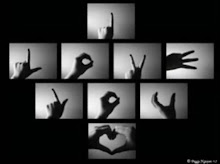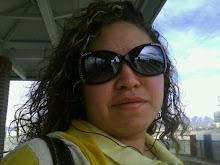Barranquilla’s Carnival is the most representative carnival of Colombia; it is a show of the most beautiful folklore, culture and happiest people. This celebration is a carnival with traditions that date back to the 19th century. Barranquilla’s Carnival is reputed for being second in size to Rio’s. It is celebrated by the people in Barranquilla, a city of Colombia located in the north-west of the country. This carnival includes a big parade on the principal street of the city; people do parties at home, also in the central plaza, orchestras do concerts and the principal singers of the country go to the city and some artist do variety of theatrical representations.
The Barranquilla’s Carnival takes place four days preceding Ash Wednesday and is the largest and colorful in the world. The normal activities of the city are paralyzed because the city gets busy with the street dances, musical and impressive parades. This carnival is very important because it’s cultural diversity and because it is a feast where the people are the main protagonists, and they can perform many styles of Colombian music and folkloric dance. This Carnival includes dances like the Spanish paloteo, African congo and Indigenous mico y micas. Many styles of Colombian music are also performed, most prominently cumbia, and instruments include drums and wind ensembles.
The Carnival of Barranquilla was proclaimed by UNESCO (United Nations Educational, Scientific and Cultural Organization), in November 2003, as one of de Masterpieces of the Oral and Intangible Heritage of Humanity, during Olga Lucia Rodriguez – carnival queen year-. It is a Colombian feast exposed to the world. The feast contains a mixture of cumbia, porro, mapale, gaita, chande, puya, fandango and merecumbes. These are examples of many styles of Colombian music. It is a feast that gathers up tradition based on the creativity of Colombian people, and it is expressed by various forms of dancing, by means of music, by different forms of art works, by the wearing of different costumes, and by the way of celebrating. The Carnival of Barranquilla is unique because of its cultural diversity and because it is a feast where the people are the main protagonists. Every dance, every folkloric group, and every custom play different roles to make the feast the best show on earth.
The Carnival of Barranquilla is multicultural, diverse and rich in different cultural expressions. It’s dancing and expressions, just like its music, are gathered from every city of the Caribbean part of Colombia. The Carnival’s diversity can be categorized in seven different blocks: traditional dances or folkloric representations; dances relation or manifestation dances; special dances or choreographic dances; Comparsas – a form of live music -, with which the choreography of dances and creativity of dances are expressed; Comedies which are traditional and folkloric popular theater, where oral expression is its primary characteristic; Litany, which are traditional groups that sign along a choir; and last but not least the customs. These can be individual, or collectives, structural and dramatic.
This carnival is the biggest and most important for the people in the region called “costeños”, because they life in the Colombian Caribbean coast, north of the country and other regions near or adjacent to it. This term is used in this country to describe a type of person happy and cheerful, with a dialect, culture, gastronomy, folklore, music, dance, idiosyncrasy, features and ways to be very different from the people inside the country or from the capital. In fact, the coast is a person of idiosyncrasy and culture much closer to Cuban, Puerto Rico, the Venezuelan (coastal regions), the Dominican Republic or Panama as their own countrymen in the interior.
The principal city of costeños is Barranquilla where the carnival is from, they are very happy, that is why the take the carnival with all the majesty and magic to show to the rest of the world that “who lives the carnival is the one who enjoys” putting this phrase as the Carnival's official slogan.
The Barranquilla’s Carnival takes place four days preceding Ash Wednesday and is the largest and colorful in the world. The normal activities of the city are paralyzed because the city gets busy with the street dances, musical and impressive parades. This carnival is very important because it’s cultural diversity and because it is a feast where the people are the main protagonists, and they can perform many styles of Colombian music and folkloric dance. This Carnival includes dances like the Spanish paloteo, African congo and Indigenous mico y micas. Many styles of Colombian music are also performed, most prominently cumbia, and instruments include drums and wind ensembles.
The Carnival of Barranquilla was proclaimed by UNESCO (United Nations Educational, Scientific and Cultural Organization), in November 2003, as one of de Masterpieces of the Oral and Intangible Heritage of Humanity, during Olga Lucia Rodriguez – carnival queen year-. It is a Colombian feast exposed to the world. The feast contains a mixture of cumbia, porro, mapale, gaita, chande, puya, fandango and merecumbes. These are examples of many styles of Colombian music. It is a feast that gathers up tradition based on the creativity of Colombian people, and it is expressed by various forms of dancing, by means of music, by different forms of art works, by the wearing of different costumes, and by the way of celebrating. The Carnival of Barranquilla is unique because of its cultural diversity and because it is a feast where the people are the main protagonists. Every dance, every folkloric group, and every custom play different roles to make the feast the best show on earth.
The Carnival of Barranquilla is multicultural, diverse and rich in different cultural expressions. It’s dancing and expressions, just like its music, are gathered from every city of the Caribbean part of Colombia. The Carnival’s diversity can be categorized in seven different blocks: traditional dances or folkloric representations; dances relation or manifestation dances; special dances or choreographic dances; Comparsas – a form of live music -, with which the choreography of dances and creativity of dances are expressed; Comedies which are traditional and folkloric popular theater, where oral expression is its primary characteristic; Litany, which are traditional groups that sign along a choir; and last but not least the customs. These can be individual, or collectives, structural and dramatic.
This carnival is the biggest and most important for the people in the region called “costeños”, because they life in the Colombian Caribbean coast, north of the country and other regions near or adjacent to it. This term is used in this country to describe a type of person happy and cheerful, with a dialect, culture, gastronomy, folklore, music, dance, idiosyncrasy, features and ways to be very different from the people inside the country or from the capital. In fact, the coast is a person of idiosyncrasy and culture much closer to Cuban, Puerto Rico, the Venezuelan (coastal regions), the Dominican Republic or Panama as their own countrymen in the interior.
The principal city of costeños is Barranquilla where the carnival is from, they are very happy, that is why the take the carnival with all the majesty and magic to show to the rest of the world that “who lives the carnival is the one who enjoys” putting this phrase as the Carnival's official slogan.

